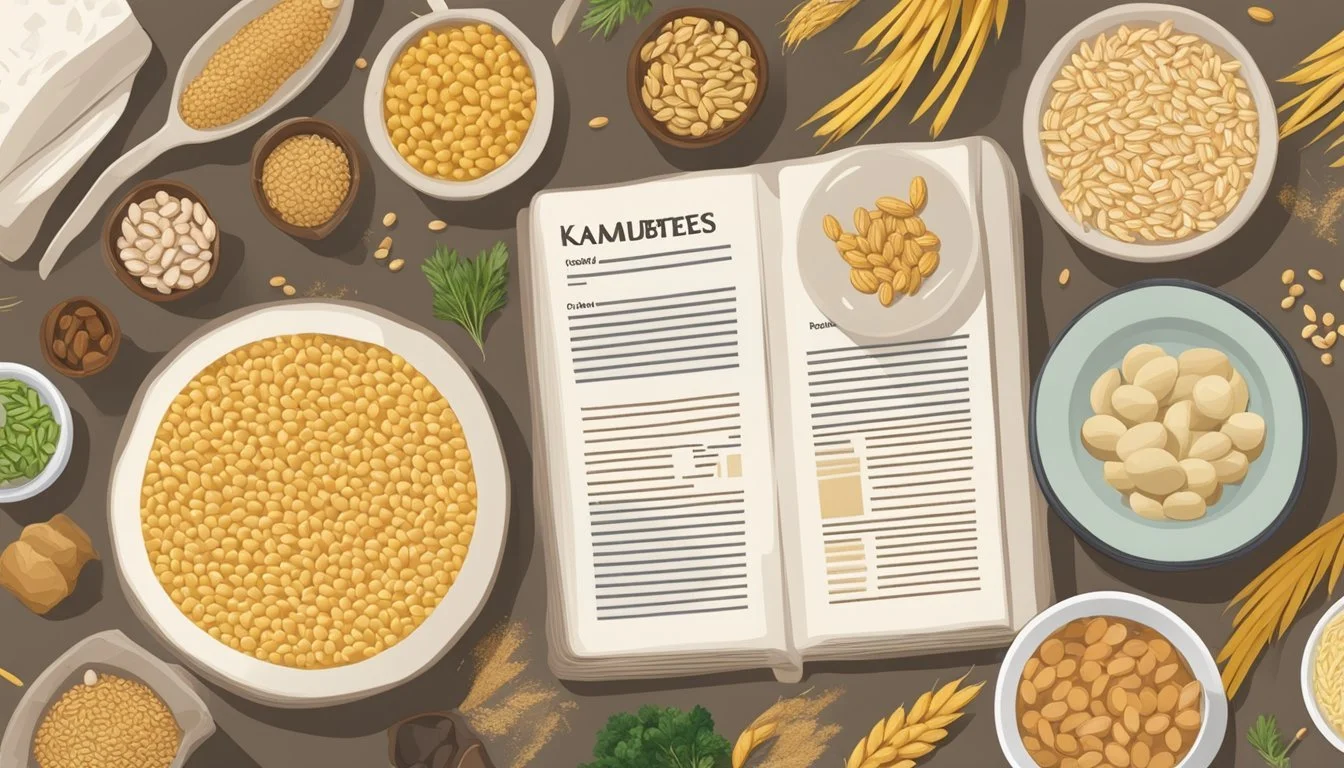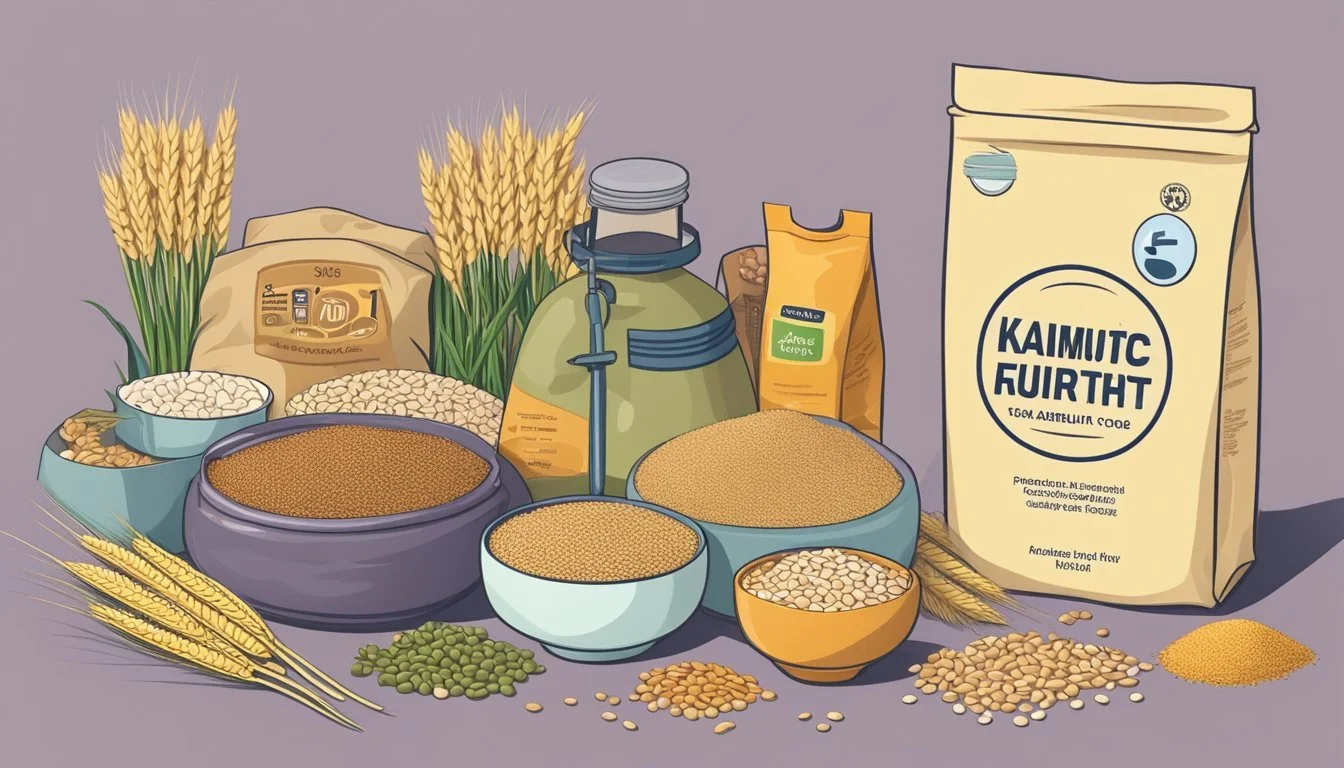Can Diabetics Eat Kamut?
Understanding Its Impact on Blood Sugar
Diabetics often seek nutrient-rich grains that can help manage their blood glucose levels. Kamut, also known as Khorasan wheat, is gaining attention for its potential health benefits. Kamut is a viable option for diabetics due to its low glycemic index and high fiber content.
Packed with essential nutrients, Kamut offers about 7.4 grams of fiber per serving, which helps in glucose control. Additionally, it provides valuable antioxidants that play a role in reducing inflammation and preventing complications related to diabetes.
By choosing Kamut as part of a balanced diet, individuals with diabetes can enjoy a hearty grain while maintaining better blood sugar levels. This ancient grain presents a nutritious alternative for those looking to diversify their meal plans.
Understanding Diabetes
Diabetes is a chronic condition characterized by high levels of glucose in the blood. Proper management, including a well-considered diet, plays an essential role in maintaining healthy blood sugar levels and preventing complications.
Role of Diet in Diabetes Management
Diet significantly impacts the management of diabetes. Individuals with diabetes need to monitor carbohydrate intake as carbs directly affect blood sugar levels.
Choosing foods with a low glycemic index (GI) can help maintain stable blood glucose levels.
Examples of beneficial foods:
Whole grains like quinoa, barley, and kamut
Vegetables which provide essential fibers
Lean proteins that don't spike blood sugar
The American Diabetes Association recommends integrating these foods to help keep blood sugar levels in check. Effective meal planning often includes balancing macronutrients and ensuring meals are spaced evenly throughout the day.
Blood Sugar Regulation Mechanism
Blood glucose levels are controlled by the hormone insulin, produced in the pancreas. Insulin helps glucose enter cells for energy use or storage.
In type 2 diabetes, the body either does not produce enough insulin or resists its effects. This leads to elevated blood glucose levels, damaging tissues over time.
Monitoring parameters such as A1C levels can provide insights into long-term glucose control. Testing is crucial for adjusting treatment plans and dietary choices to ensure optimal blood sugar management.
By understanding how the body regulates blood sugar, individuals with diabetes can make more informed decisions about their diet and lifestyle to mitigate the risks associated with the condition.
Kamut as a Dietary Option for Diabetics
Diabetics can consider Kamut for its unique nutritional profile and low glycemic index. This ancient grain offers various vitamins and minerals valuable for managing diabetes.
Nutritional Profile of Kamut
Kamut, or khorasan wheat, is rich in essential nutrients. It's a whole grain providing significant carbohydrates, protein, and fiber. A one-cup serving of Kamut offers approximately 227 calories, with 47.5 grams of carbohydrates, 7.4 grams of fiber, and 5.3 grams of naturally occurring sugars. This fiber content can help manage blood sugar levels by slowing down digestion and glucose absorption.
Magnesium is a crucial mineral found in Kamut. Magnesium plays a role in insulin secretion and sensitivity, which is vital for diabetics managing their condition. Additionally, the grain contains antioxidant properties that may help reduce inflammation and oxidative stress, common issues in diabetes.
Glycemic Index of Kamut
Kamut has a low glycemic index (GI), which measures how quickly a food raises blood sugar levels. Foods with a low GI release glucose more slowly and steadily, preventing spikes in blood sugar. This can help diabetics maintain stable blood glucose levels post-meal.
Including Kamut in a diabetic diet can therefore aid in blood sugar management. Its low GI, combined with the high fiber content, makes it a suitable carbohydrate source for people with diabetes. This ancient grain can be a beneficial and nutritious addition to their dietary regimen.
Health Benefits Beyond Blood Sugar Control
Kamut, also known as khorasan wheat, offers a range of health benefits in addition to helping manage blood sugar levels. This section explores its potential positive impacts on cardiovascular health and digestive health, which are vital for overall well-being.
Kamut and Cardiovascular Health
Kamut may contribute significantly to cardiovascular health. Rich in minerals such as magnesium, iron, zinc, and selenium, Kamut supports various bodily functions crucial for heart health. Magnesium, for instance, helps in maintaining normal blood pressure, while selenium acts as a powerful antioxidant.
Additionally, Kamut contains high levels of B vitamins, which play a role in reducing homocysteine levels, an amino acid linked to an increased risk of heart disease. The fiber content in Kamut also helps lower LDL cholesterol levels, thereby reducing the risk of heart disease and cardiovascular disease.
Digestive Health and Weight Management
Kamut is highly beneficial for digestive health, primarily due to its high fiber content. Fiber ensures smooth bowel movements, reducing the incidence of constipation. Moreover, the prebiotic properties of the fiber in Kamut aid in maintaining a healthy gut microbiome.
In terms of weight management, Kamut can be an excellent addition to a diet aimed at weight loss. The complex carbohydrates in Kamut provide sustained energy release, which helps in preventing overeating. Its nutrient richness, coupled with high fiber, aids in promoting a sense of fullness, combating obesity and assisting in weight management efforts effectively.
Incorporating Kamut into a Diabetic Diet
Kamut, an ancient whole grain, is rich in complex carbohydrates and dietary fiber that can help manage blood sugar levels. Here, we focus on recommended serving sizes and meal ideas that integrate Kamut into a diabetic-friendly diet.
Recommended Serving Sizes and Frequency
For diabetics, portion control is essential to manage blood sugar levels. A common recommendation is to consume ¼ to ½ cup of cooked Kamut per meal. This serving provides essential nutrients while maintaining balanced blood glucose levels.
Eating Kamut 1-2 times per week can be beneficial without overwhelming the diet with carbohydrates. Combine Kamut with other whole grains and heart-healthy foods, such as vegetables and lean proteins, to create balanced meals.
Kamut-Based Meal Ideas
Kamut Salads: Combine cooked Kamut with leafy greens, diced vegetables, and a light vinaigrette. This dish is high in dietary fiber and complex carbohydrates, promoting stable blood sugar levels.
Kamut Soups: Add Kamut to vegetable or chicken broth soups. Its chewy texture and nutritional profile make it a great addition to heart-healthy, low-fat soups.
Kamut Cereals: Start the day with Kamut-based cereals, paired with fruits and nuts. This meal is a good source of proteins and healthy fatty acids, providing sustained energy.
Baked Goods: Use Kamut flour in baking bread, muffins, and pancakes. These options are nutritious and support blood sugar management compared to refined flour products. Adjust recipes to minimize sugar content.
By incorporating Kamut into meals thoughtfully, diabetics can benefit from its nutritional properties while maintaining controlled blood sugar levels.
Substitutes and Alternatives to Kamut
Diabetics looking for Kamut alternatives can consider various grains, especially those that are gluten-free and offer rich nutritional benefits. Key substitutes include quinoa, brown rice, and buckwheat, which provide high fiber and essential nutrients.
Grains for Gluten-Sensitive Diabetics
For diabetics with gluten sensitivities, buckwheat and quinoa are excellent choices. Buckwheat is gluten-free and offers a nutty, earthy taste comparable to Kamut. It's also high in fiber, important for managing blood sugar levels, and provides magnesium and manganese.
Quinoa is another versatile option. It's gluten-free and has a relatively neutral flavor. It can be used in baking, cooking, and as a thickener. Quinoa’s versatility makes it suitable for bread, muffins, and pancakes, supporting diverse culinary applications.
Brown rice is also a viable choice. It’s gluten-free and has a higher fiber content than white rice, which can help regulate blood sugar levels. Additionally, brown rice can be used in a variety of dishes like pilafs and casseroles.
Comparing Nutritional Benefits
Kamut and its substitutes differ in nutritional profiles, which can impact diabetic diets. Kamut is rich in protein, fiber, and minerals such as magnesium and zinc. These contribute to muscle repair, digestive health, and metabolic processes.
In comparison:
Quinoa provides high protein, iron, and fiber. It supports muscle growth, oxygen transport in the blood through iron, and digestive health.
Buckwheat is noted for its fiber content, essential for blood sugar regulation, and minerals like magnesium.
Brown rice offers fiber and nutrients that help control blood sugar spikes, unmatched by white rice.
Barley and oats can also be considered. Although not gluten-free, they are high in soluble fiber, which helps slow glucose absorption.
Risks and Considerations
Consuming Kamut offers several health benefits; however, diabetics must consider certain risks. Gluten intolerance and balancing Kamut with other carbohydrate sources are crucial factors to manage.
Managing Gluten Intolerance
Kamut contains gluten, making it unsuitable for individuals with celiac disease or gluten sensitivity. Those with gluten intolerance might experience symptoms such as stomach cramps, bloating, and diarrhea if they consume Kamut.
People with these conditions should consult with their healthcare provider before adding Kamut to their diet. For those without such intolerances, Kamut can still be part of a healthy diet, but monitoring for any allergic reactions or digestive issues is essential to avoid complications.
Balancing Kamut with Other Carbs
Managing diabetes involves careful carbohydrate counting to maintain stable blood glucose levels. Kamut, like other grains, is a carbohydrate source. Diabetics need to consider the carbohydrate content of Kamut in their daily meal plans.
To balance Kamut with other carbs, it is crucial to include foods high in fiber, such as vegetables and legumes, which can help regulate blood sugar levels. Combining Kamut with regular exercise can further assist in controlling diabetes. Tracking intake and adjusting portions accordingly ensures that Kamut contributes positively to the risk profile of a diabetic diet.





